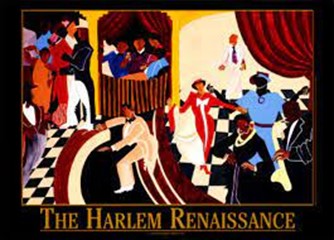BLACK HISTORY IS AMERICAN HISTORY | PRESENTED BY ADLA
Feb 09, 2022
The African Descent Lutheran Association of Metro New York:

Black African American Culture and Theology
This space will not allow the listing for or trying to capture the essence of Black culture. There are too many who have impacted American history. Influences included Black heritage and American culture, visual arts, music —jazz blues and spirituals, theater —drama and opera, dance, poetry, fiction, literature, and activism.
The northern Manhattan neighborhood of Harlem was meant to be an upper-class white neighborhood in the 1880s, but rapid overdevelopment led to empty buildings and desperate landlords seeking to fill them.
In the early 1900s, a few middle-class Black families from another neighborhood known as Black Bohemia moved to Harlem, and other Black families followed. Some white residents initially fought to keep African Americans out of the area but failing that many whites eventually fled.
Outside factors led to a population boom in northern cities. Black Codes and Jim/Jane Crowism southern state laws endangered the lives of Black African Americans. From 1910 to 1920, African American populations migrated in large numbers from the South to the North. In 1915 and 1916, natural disasters in the south put Black workers and sharecroppers out of work. Additionally, during and after World War I immigration to the United States fell, and northern recruiters headed south to entice Black workers to their companies. By 1920, some 300,000 African Americans from the South had moved north, and Harlem was one of the most popular destinations for these families.
The Harlem Renaissance was the mainstay of New York City in the early 20th Century as a Black cultural mecca, which resulted in a social and artistic explosion. Lasting roughly from 1910 to 1940; the period is considered a golden age in African American culture, manifesting in literature, music, stage performance, and art.
Notables in the Harlem Renaissance are Langston Hughes, Zora Neal-Hurston, Howard Thurman, Marcus Garvey, Aaron Davis, W.E DuBois, Angela Weld-Grimke, Georgia Douglas, and Anne Spence.
The Black Arts Movement (BAM) was a cultural movement in the 1960s and 1970s. It manifested itself in the arts and scholarship. Black writers used their creativity to support a Black American Revolution. Scholars urged Black Americans to regain connections to their African roots.
Important influencers in the Black Arts Movement are Amiri Baraka (previously known as LeRoi Jones), Nikki Giovanni, Sonia Sanchez, Maya Angelou, James Baldwin, Lorraine Hansberry, Thelonious Monk, Louis Armstrong, Duke Ellington, and John Coltrane to name a few. BAM led to the Hip-Hop movement.
- Black Liberation Theology
Rev. Dr. James Hal Cone, author of God of the Oppressed and The Cross and the Lynching Tree is often referred to as the father of the liberation movement. Quoting Dr. Cone, he states, “Black theology is an understanding of the Gospel which sees justice for the poor as the very heart of what the Christian Gospel is about and the very heart of what God is doing in the world.”
Womanist Theology grew out of Liberation Theology. Womanist Theology is an integration of faith and ethics. A focus to undo the effects on issues of classism, racism, and sexism that have been dominant in the lives of Black women since they arrived on the shores of the colonies. Black women wove their faith into the centrality of the development of African American religion, politics, and public culture. Founding women theologians are Rev. Dr. Katie G. Cannon, Jacqueline Grant, Delores Williams, and Renita J. Weems to name a few.